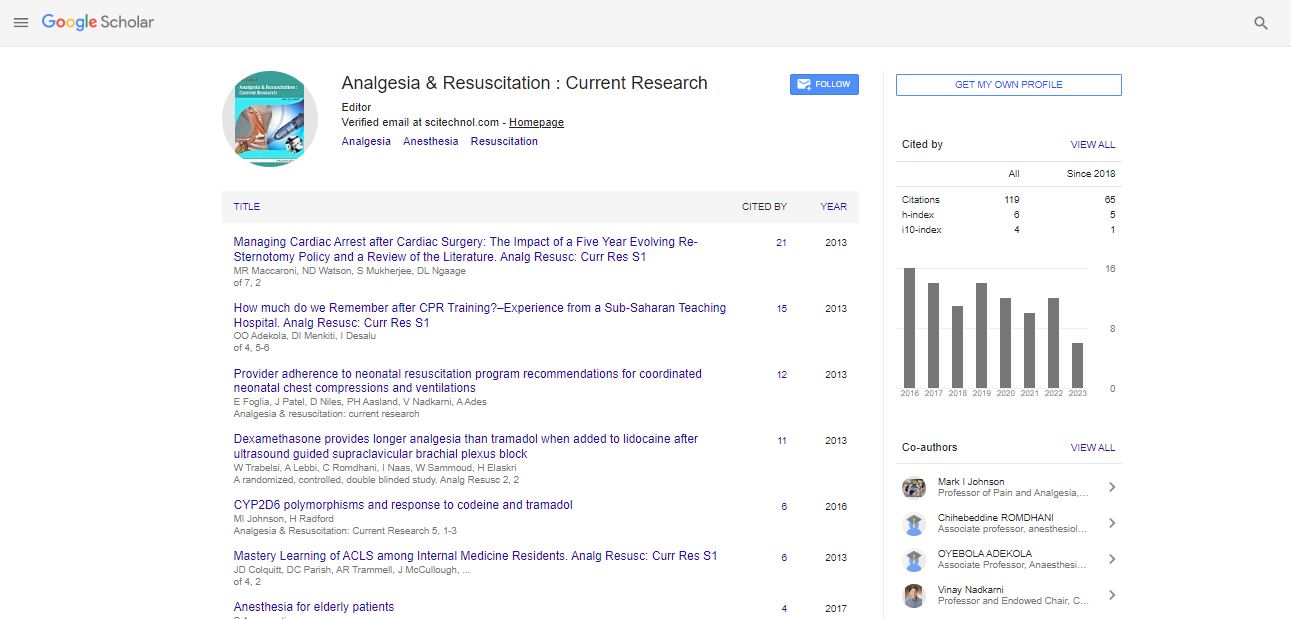Case Report, Analg Resusc Curr Res Vol: 7 Issue: 1
An Emergency Case: A Successful Anesthetic Management of Aorta-Trachea Fistula
Deren Bayram1*, Osman Bayındır1 and Alper Toker2
1Department of Anesthesiology and Reanimation, Istanbul Florence Nightingale Hospital, Istanbul /Turkey
2Department of Thoracic surgery, Istanbul Florence Nightingale Hospital, Istanbul/Turkey
*Corresponding Author : Deren Bayram
Department of Anesthesiology and Reanimation, Istanbul Florence Nightingale Hospital, Istanbul/Turkey
Tel: +90 5554991490
E-mail: deren2003@yahoo.com
Received: December 13, 2017 Accepted: January 05, 2018 Published: January 09, 2018
Citation: Bayram D, Bayındır O, Toker A (2018) An Emergency Case: A Successful Anesthetic Management of Aorta-Trachea Fistula. Analg Resusc: Curr Res 7:1. doi:10.4172/2324-903X.1000154
Abstract
This report describes 19 year old male with a case with tracheal necrosis and the presence of ascendan aortic fistula with the sign of massive hemoptysis which is diagnosed intraoperatively, although preoperative chest CT has not demonstrated the findings. This emergency case report was to demonstrate the possible ways of
intraoperative management in similar desperate situations. On the first hand, laparotomy is done as planned previously to extract omentum for the support of suspected tracheal injury. Second part of the operation continued with sternotomy and emergently one lung ventilation and later extra corporal circulation. At the end of the operation, the patient was transferred to ICU. He has been discharged from hospital without any haemodynamic or neurological complication. In this case priority is maintaining oxygenation. The inflammatory changes in the surgical anatomic region must be carefully considered. Postoperative ventilation parameters and side effects of positive pressure ventilation make ECMO devices mandatory.

